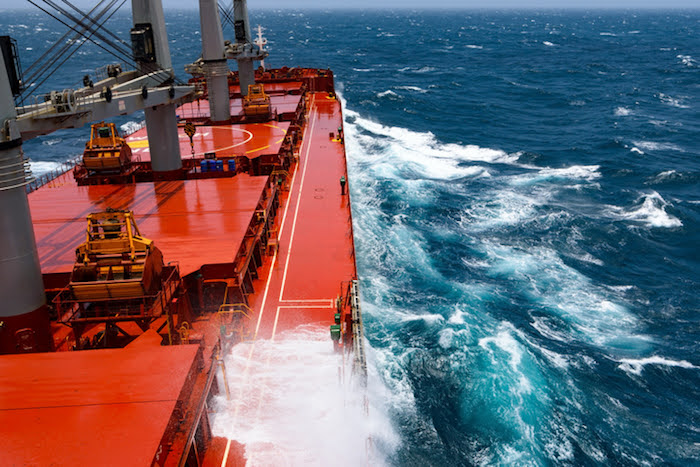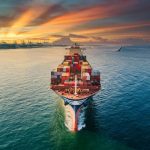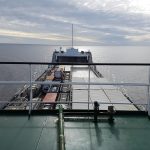The intensification of Tropical Cyclone Ilsa into a Category 4 storm off the coast of Western Australia has kept market participants in watchful mode as shipping schedules and loading operations risk facing delays.
Sources said the uncertainty of the impact of this tropical cyclone may weigh on Pacific freight rates and could see more ships ballasting towards the Atlantic basin.
All berths at Port Hedland in Western Australia were required to be cleared by 13:00 local time on April 12, and all trading vessels should be clear of the port limits by 18:00 on the same day, according to shipping agency sources. There were 10 Capesize vessels at Port Hedland as of April 12, according to Platts cFlow ship and commodity tracking software from S&P Global Commodity Insights, with 131 vessels expected to arrive over the next two weeks.
“Freight rates on the [Western Australia to China iron ore route] did come off on April 11 with the last fixed at $7.95/wmt,” said a shipbroker source. There were shippers who usually move iron ore cargoes from Port Hedland previously in the market but did not fix any vessels following a reshuffling in their schedules on April 11, the source said.
Platts, part of S&P Global, assessed freight for a Capesize ship to move 170,000 mt (plus/minus 10%) of iron ore from Port Hedland to Qingdao at $8/wmt April 11, down 50 cents/wmt from April 10.
“There are a whole lot of variables [to consider] as the port [Port Hedland] would likely be closed for two to three days, and there would be the scheduling perspective [in the short term] but [the impact of the fallout] could be more lasting if it were the mine, rail or inland logistics that are being affected,” a second shipbroker source said. If that comes to fruition, that could hurt shipping demand, the source said.
A chartering source with an iron ore miner noted that the port was still operating on April 12, and following the clear out of vessels, there will likely be some waiting until the storm passes. Shipping sources agreed that Western Australia to China freight rates were under some pressure from fears of demand and schedule disruptions.
Port Hedland shipped 556.6 million mt of cargo in 2022, the largest in terms of volumes out of Australia and the majority of which went on Capesize ships, according to S&P Global data.
Market sources said tonnage in the Pacific appeared to be stacking up and the lack of cargoes from Port Hedland was leading some shipowners and operators to consider alternatives such as coal voyages from the east coast of Australia or ballasting towards Brazil. “It’s a wait and see for now but with [Brazil to China] freight rates paying better, I feel more owners may choose to ballast,” said a third shipbroker source.
Some market participants said they felt that the impact of the storm may be contained as information from the Australian Bureau of Meteorology showed that Tropical Cyclone IIsa is forecast to make landfall between Port Hedland and Broome rather than Port Hedland itself. “Port Hedland would be shut for these two days, but Port Dampier is operating normally,” said a ship operator source. “I guess the impact [as it stands now] is that the market goes quiet and is waiting to see the ramifications on schedules.”
“There seems to be a bit more resistance today [April 12], and offers are in at low-$8s/wmt on Rio [April 27-29 cargo],” the second shipbroker source said. “No offers were in at the last done level, so maybe the drop [in freight levels] was overcooked.”
Source: Hellenic Shipping News






